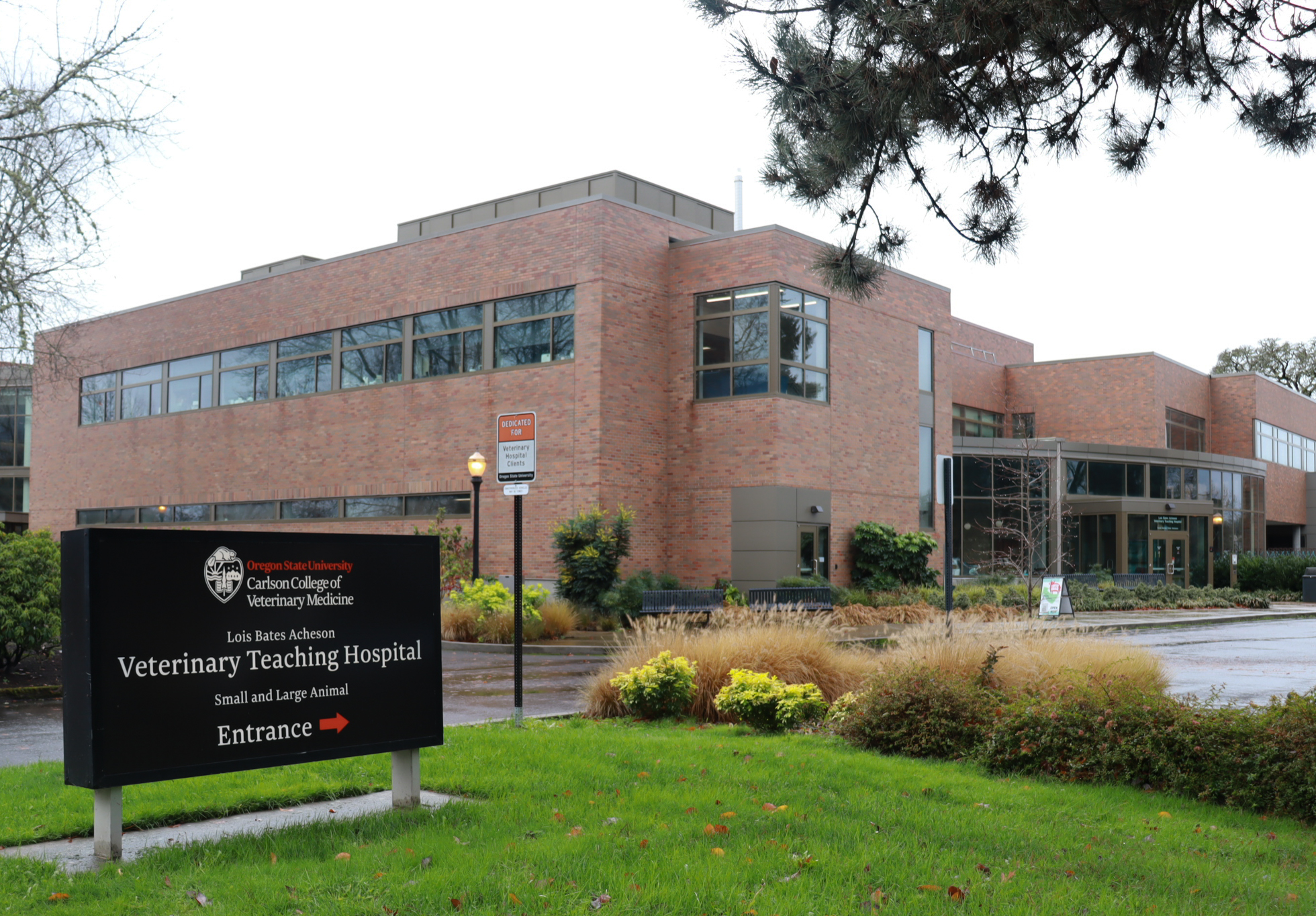Oregon State University’s College of Veterinary Medicine was recently approved to begin testing animals for COVID-19, which researchers are hoping will help them understand the disease in a new way.
The research team will specifically be testing 1,600 animals. The project is set to run for two years, and will cost around $900,000 with a grant from the United States Department of Agriculture, which was approved early last summer. If the team finds proof of COVID-19 within the animals, the project may have to be extended.
This project is set to examine how COVID-19 spreads throughout animals, but also examines the potential of animals spreading COVID-19 to humans. One of the reasons this research is being conducted is to hopefully avoid a disease like COVID-19, that started in animals, from happening again.
“The rationale for conducting this project is to try to determine if there are what we would call ‘wild animal reservoirs’ of SARS-CoV2 (the virus responsible for COVID-19) in different wild animal populations where the virus may be present and spreading, that we don’t know about,” said Brian Dolan, an associate professor in OSU’s College of Veterinary Medicine, who will be leading the project.
While it is unlikely for a virus like COVID-19 that started in animals and spread to humans to happen again, this project will help humans to begin to understand these types of “zoonotic” diseases more.
“There’s always the potential that (SARS-Cov2) could become another source of a virus that could infect humans,” Dolan said. “I think that’s incredibly unlikely to happen. However, it happened one time, so it would be worth keeping an eye on it.”
Other examples of this kind of research have been taking place in the Midwest, where they have found some white tail deer that have tested positive for COVID-19. There had even been studies where a virus from a deer was transmitted to humans.
Dolan also spoke on how viruses do have the ability to only spread to one human, and then the virus stops there. While it is not common, it can happen.
In regards to how viruses can spread from animals to humans, there are many different ways.
“Sometimes it does happen where either species are similar enough, or a virus or bacteria is able to, by chance, infect an individual and is able to replicate and create more of itself,” Dolan said.
The current project is not set to examine other viruses besides COVID-19. However, the team will be able to keep and preserve the samples they get, which could later be used to examine other zoonotic viruses.
Dolan and the team began the plan for this project about a year ago. They previously had “preliminary data” before hand, but are now working towards more.
Sofia Arola, an undergraduate senior at OSU, has been working alongside Dolan in this project, and is planning on using this research as part of her Honors thesis.
“(I’ve been) doing research on SARS-CoV2 and how it spreads in animal species, so we can determine what species may or may not be able to be infected with the virus,” Arola said.
Arola will be assisting with the equipment and how the kits will be distributed, and will also be continuing her research as this project unfolds.
The team plans to test around 1,600 mammals, but the exact number depends on sample availability. The team plans to work with only mammals because so far, most of the animals who they have found with COVID-19 have been mammals.
They have been working with the Oregon Department of Fish and Wildlife, wildlife rehabilitation centers and are currently working with Chintimini Wildlife Center in Corvallis.
“Chintimini Wildlife centers have been ‘beta-testing’ how to get nasal swabs from animals to submit for testing,” Dolan said. Animals are tested for COVID-19 the same way that humans are, with nasal or oral swab kits.
The team has also been working with the Oregon Veterinary Diagnostic Lab, as they frequently have samples available.
“(The lab) often gets samples coming in from numerous different places around the state, so by collaborating with them we can test for SARS-CoV2 when they are, at the same time, testing for other things, like rabies,” Dolan said.
Many of the animals being tested will be ones who have been euthanized. However, the ODFW will be letting the team use animals who have become roadkill.
Regardless of how the project turns out, each result is useful, according to Dolan.
“If we never find the virus, that’s an important result, suggesting it’s not out there,” Dolan said. “However, if we do find it going forward, it’s also something for us to consider.”
The team is approaching this project with an open mind, according to Dolan, and they are open to any and all possibilities.
“Instead of taking a narrow approach, we’re really casting a wide net,” Dolan said.

















































































![Newspaper clipping from February 25, 1970 in the Daily Barometer showing an article written by Bob Allen, past Barometer Editor. This article was written to spotlight both the student body’s lack of participation with student government at the time in conjunction with their class representatives response. [It’s important to note ASOSU was not structured identically to today’s standards, likely having a president on behalf of each class work together as one entity as opposed to one president representing all classes.]](https://dailybaro.orangemedianetwork.com/wp-content/uploads/2025/03/Screenshot-2025-03-12-1.00.42-PM-e1741811160853.png)

























